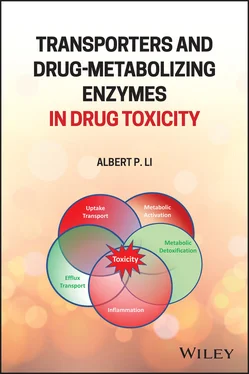275 278
276 279
277 280
278 281
279 282
280 283
281 284
282 285
283 286
284 287
285 288
286 289
287 290
288 291
289 292
290 293
291 294
292 295
293 296
294 297
295 298
296 299
297 300
298 301
299 302
300 303
301 304
302 305
303 306
304 307
305 308
306 309
307 310
308 311
309 312
310 313
311 314
312 315
313 316
314 317
315 318
316 319
317 320
318 321
319 322
320 323
321 324
322 325
323 326
324 327
325 328
326 329
327 330
328 331
329 332
330 333
331 334
332 335
333 336
334 337
335 339
336 340
337 341
338 342
339 343
340 344
341 345
342 346
343 347
344 348
345 349
346 350
347 351
348 352
349 353
350 354
351 355
352 356
353 357
354 358
355 359
356 360
357 361
358 362
359 363
360 364
361 365
362 366
363 367
364 368
365 369
366 370
367 371
368 372
369 373
370 374
371 375
372 376
373 377
374 378
375 379
376 380
377 381
378 382
379 383
380 384
381 385
382 386
383 387
384 388
385 389
386 390
387 391
388 392
389 393
390 394
391 395
392 396
393 397
394 398
395 399
396 400
397 401
398 402
399 403
400 404
401 405
402 406
403 407
404 408
405 409
406 410
407 411
408 412
409 413
410 414
411 415
412 416
413 417
414 418
415 419
416 420
417 421
418 422
419 423
420 424
421 425
422 426
423 427
424 429
425 430
426 431
427 432
428 433
429 434
430 435
431 436
432 437
433 438
434 439
435 440
436 441
437 442
438 443
439 444
440 445
441 446
442 447
443 448
444 449
445 450
446 451
447 452
448 453
449 454
450 455
451 456
452 457
453 458
454 459
455 460
456 461
457 462
458 463
459 464
460 465
461 466
462 467
463 468
464 469
465 470
466 471
467 472
468 473
469 474
470 475
471 476
472 477
473 478
474 479
475 481
476 482
477 483
478 484
479 485
480 486
481 487
482 488
483 489
484 490
485 491
486 492
487 493
488 494
489 495
490 496
491 497
492 498
493 499
494 500
Transporters and Drug‐Metabolizing Enzymes in Drug Toxicity
Edited by Albert P. Li
In Vitro ADMET Laboratories, Inc. Columbia, MD USA

This edition first published 2021
© 2021 by John Wiley & Sons, Inc.
All rights reserved. No part of this publication may be reproduced, stored in a retrieval system, or transmitted, in any form or by any means, electronic, mechanical, photocopying, recording or otherwise, except as permitted by law. Advice on how to obtain permission to reuse material from this title is available at http://www.wiley.com/go/permissions.
The right of Albert P. Li to be identified as the author of the editorial material in this work has been asserted in accordance with law.
Registered Office John Wiley & Sons, Inc., 111 River Street, Hoboken, NJ 07030, USA
Editorial Office 111 River Street, Hoboken, NJ 07030, USA
For details of our global editorial offices, customer services, and more information about Wiley products visit us at www.wiley.com.
Wiley also publishes its books in a variety of electronic formats and by print‐on‐demand. Some content that appears in standard print versions of this book may not be available in other formats.
Limit of Liability/Disclaimer of Warranty In view of ongoing research, equipment modifications, changes in governmental regulations, and the constant flow of information relating to the use of experimental reagents, equipment, and devices, the reader is urged to review and evaluate the information provided in the package insert or instructions for each chemical, piece of equipment, reagent, or device for, among other things, any changes in the instructions or indication of usage and for added warnings and precautions. While the publisher and authors have used their best efforts in preparing this work, they make no representations or warranties with respect to the accuracy or completeness of the contents of this work and specifically disclaim all warranties, including without limitation any implied warranties of merchantability or fitness for a particular purpose. No warranty may be created or extended by sales representatives, written sales materials or promotional statements for this work. The fact that an organization, website, or product is referred to in this work as a citation and/or potential source of further information does not mean that the publisher and authors endorse the information or services the organization, website, or product may provide or recommendations it may make. This work is sold with the understanding that the publisher is not engaged in rendering professional services. The advice and strategies contained herein may not be suitable for your situation. You should consult with a specialist where appropriate. Further, readers should be aware that websites listed in this work may have changed or disappeared between when this work was written and when it is read. Neither the publisher nor authors shall be liable for any loss of profit or any other commercial damages, including but not limited to special, incidental, consequential, or other damages.
Library of Congress Cataloging‐in‐Publication Data applied forISBN: 9781119170846
Cover design by Wiley
Cover image: Courtesy of Albert P. Li
A major goal of this book is to provide information to aid the advancement of experimental approaches to ensure drug safety in drug development. It should be of interest to students and researchers in drug metabolism, transport, and toxicology; practitioners in drug development; and governmental regulatory scientists.
The most challenging aspect of drug development is the selection of drug candidates with appropriate safety and efficacy to ensure regulatory approval and market acceptance. The paradigm of demonstration of safety and efficacy in preclinical animal models followed by human clinical trials needs to be refined. The inadequacy of animal models to predict human safety and efficacy is clearly illustrated by the estimated >90% clinical trial failure rate for candidates selected based on results of preclinical trials. Let us ponder this for a minute, despite the extensive time and resources spent in preclinical evaluation, 9 out of 10 candidates selected for clinical trial fail due to a host of factors, with the major ones being unexpected toxicity and/or lack of efficacy. Furthermore, numerous marketed drugs have been withdrawn or have their use limited due to severe, often idiosyncratic, adverse drug toxicity.
This book is intended to present information to overcome this challenge. Failure of preclinical studies to predict human safety and efficacy can be attributed to species differences in drug properties. The inability of clinical trials to eliminate drugs with idiosyncratic drug toxicity is likely due to the inadequate number of subjects employed in regulatory clinical trials to identify drugs causing severe idiosyncratic drug toxicity with an incidence of <1/5000. It is, therefore, of utmost importance to fully understand the key determinants of drug toxicity and apply the knowledge to identify drug candidates with human toxicity as well as to identify the at‐risk human populations.
Читать дальше













